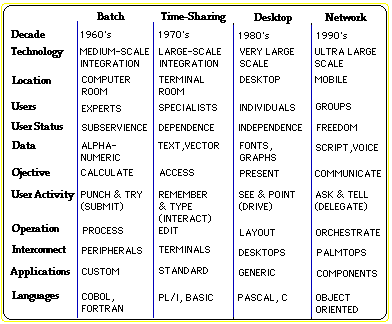
The Project Athena experiment embodied technological, pedagogical, and organizational questions:
What does it take to design, implement, and operate a fully distributed, coherent, vendor-independent, academic computing environment for a university? How do faculty use such an environment educationally, and which of these uses prove effective? Who should manage the environment, support faculty and student users, and provide appropriate incentives and financing for academic computing to flourish? Like all experiments, Project Athena also sought to identify unrecognized issues, costs, and benefits surrounding advanced academic computing. (Jackson, 1991, p. 20-2)
The reasons for nonsuccesses included underestimating the size of the task (often by a large amount), using an inappropriate pedagogical model, difficulties with the system, difficulty in obtaining necessary skills for programming (UNIX, C, X-Windows System, human interface design), and declining interest on the part of the faculty member. (Champine, 1991, p. 46)